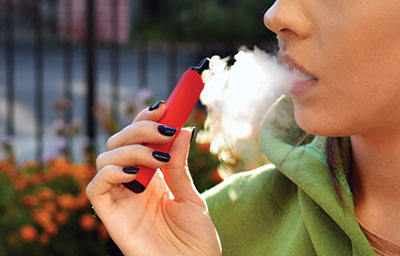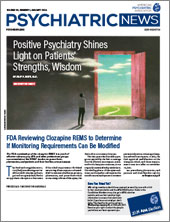Youth who reported experiencing severe psychological distress were more likely to vape cannabis in the previous month than those who did not report psychological distress, according to a report in the American Journal of Preventive Medicine.
The study also found that being older (16 to 18); getting poor grades; vaping nicotine; and smoking cannabis in cigars, cigarillos, or little cigars (“blunt” use), among other factors, were associated with higher odds of cannabis vaping.
“Some adolescents may use cannabis to regulate distress, and adolescence is an important developmental period for intervention as adolescents who use cannabis as a coping mechanism may go on to develop problematic use,” wrote lead author Delvon T. Mattingly, Ph.D., M.S., an assistant professor in the Department of Behavioral Sciences at the University of Kentucky, and colleagues in the report.
The researchers looked at the association between cannabis vaping and psychological distress among 22,202 youth aged 11 to 18 years using data from the 2022 National Youth Tobacco Survey (NYTS). Students surveyed were categorized as having normal, mild, moderate, or severe psychological distress, based on their responses to the Patient Health Questionnaire-4 (PHQ-4).
A total of 1,629 youth (about 7.6% of those surveyed) reported having vaped cannabis in the previous 30 days. The breakdown of psychological distress in this group was as follows:
•
22.9% reported severe psychological distress.
•
17.5% reported moderate psychological distress.
•
22.3% reported mild psychological distress.
Of those surveyed who had not vaped cannabis in the past 30 days, 11.4% reported severe psychological distress, 13.0% reported moderate psychological distress, and 20.5% reported mild psychological distress.
Adolescents who experienced severe psychological distress were 1.46 times more likely to have vaped cannabis in the previous 30 days, compared with those who experienced no psychological distress. Those with moderate or mild psychological distress were 1.22 times and 1.16 times more likely to have vaped cannabis, respectively.
Association May Be Bidirectional
In comments to Psychiatric News, Mattingly said it is possible that teenagers experience psychological distress as a result of exposure to cannabis—or that their distress is exacerbated.
“Our study cannot speak to causality in either direction—whether it is that distress causes or influences cannabis use or cannabis use causes distress,” he said. “What the NYTS data do tell us is that there is an association between psychological distress and cannabis vaping after controlling for a variety of sociodemographic and potential confounding factors. These findings can be used as a benchmark for further investigations that employ more evidence-based study designs and methodologies, including causal inference methods, to investigate the process by which distress may influence cannabis use and vaping.”
Regardless of the direction of cause and effect, Mattingly said psychiatrists and mental health professionals should be aware that psychological distress and cannabis use are interrelated and screen for cannabis use in teens experiencing distress. And he said mental health professionals should know that “adolescents are finding different modes by which to consume cannabis, such as vaping, and each of these routes of cannabis administration may come with unique health detriments.”
Cannabis Legalization: ‘Unintended Consequences’
John Fromson, M.D., a member of the APA Council on Addiction Psychiatry, who reviewed the report for Psychiatric News, said the study shows redundantly that cannabis is not harmless; it has been associated with poorer school performance, deficits in memory and concentration, and increased risk for psychosis and suicide. Fromson pointed out that vaping appears also to allow users to receive higher doses of tetrahydrocannabinol (THC), the psychoactive ingredient in cannabis.
He is an associate professor of psychiatry at Harvard University and president of the Massachusetts Psychiatric Society.
“In the movement toward legalization of cannabis, not enough attention has been paid to the unintended consequences of increased adolescent exposure,” he told Psychiatric News.
Mattingly agreed. “As the United States continues to decriminalize cannabis and legalize recreational and medical cannabis use, we must continually monitor and survey the impact on adolescent use patterns,” he said. “Our current understanding on whether decriminalization/legalization of cannabis leads to increased cannabis use is mixed, but there are active research efforts attempting to better understand these relationships.”
He added, “As our study focuses on vaping specifically—one of the most common types of substance use and misuse among adolescents—we encourage clinicians, parents, and policymakers to remain diligent about and committed to vaping prevention and reduction efforts in the United States.” ■



